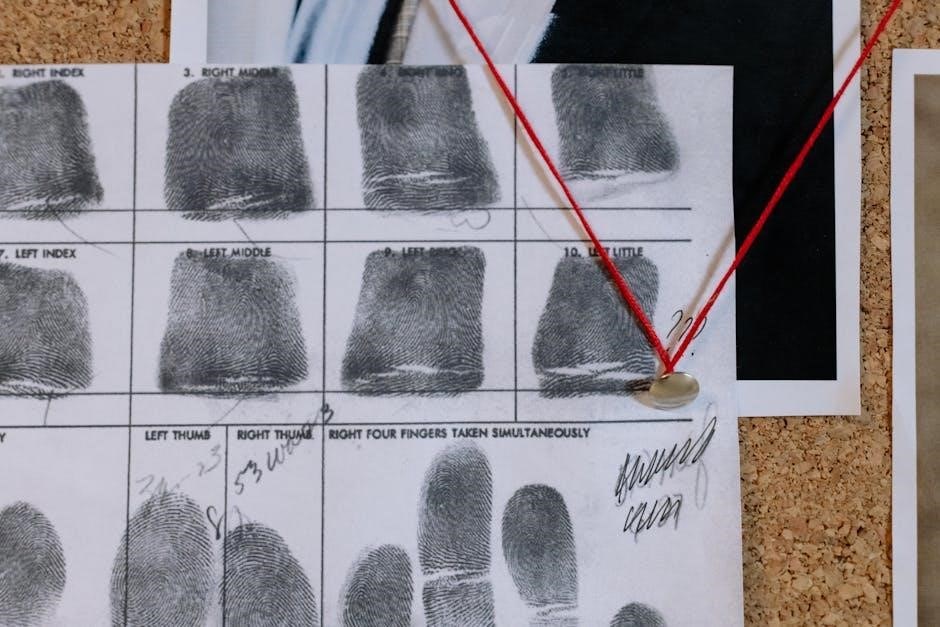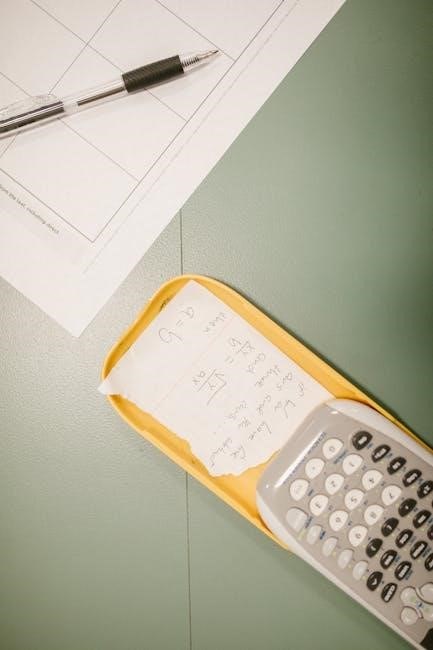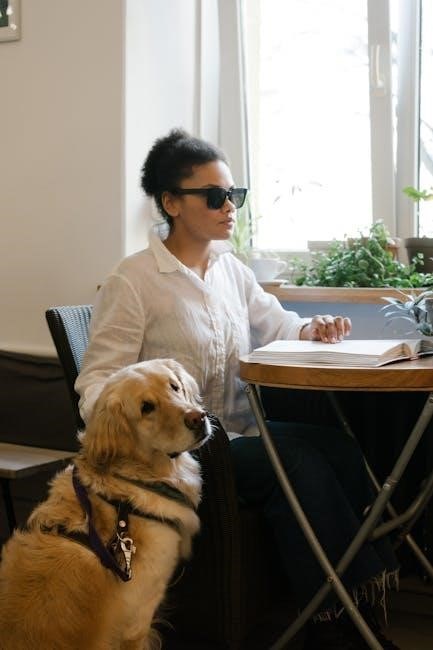Indiana Glass Company, active from 1898 to 1929, produced over 120 pressed glass patterns, each showcasing intricate designs and craftsmanship.
These pieces, appealing to collectors, highlight the company’s significant contribution to vintage glassware.
Understanding Glass Pattern Identification
Identifying Indiana Glass patterns involves examining design elements, colors, and maker marks. Patterns like Diamond Point Ruby showcase intricate details, while resources like The Collectors Encyclopedia aid collectors.
2;1 Key Characteristics of Indiana Glass Patterns
Indiana Glass patterns are renowned for their intricate designs and craftsmanship. Key characteristics include repetitive motifs, such as flowers or geometric shapes, often with fine details like three small lines in flower petals. The Heirloom pattern, produced in crystal, mimics cut glass, while Diamond Point Ruby stands out for its vibrant color. Patterns vary in complexity, from simple to elaborate, and were produced in various colors, including clear, ruby, and crystal. These designs, spanning Depression-era to post-WWII styles, are highly collectible. Identifying these traits helps enthusiasts and collectors authenticate and value Indiana Glass pieces effectively.
2.2 Historical Context of Indiana Glass Production
The Indiana Glass Company operated from 1898 to 1929, becoming a prominent name in pressed glass production. During this period, the company created over 120 distinct patterns, many of which are highly sought after by collectors today. The early 20th century marked a golden era for Indiana Glass, with patterns like Heirloom and Diamond Point Ruby gaining popularity. These designs were often inspired by cut glass and featured intricate details. The company’s production spanned the Depression era and post-World War II, adapting to changing tastes while maintaining its reputation for quality and craftsmanship. This historical context is essential for understanding the evolution and significance of Indiana Glass patterns.
2.3 Popular Types of Indiana Glass Patterns
Indiana Glass produced a variety of patterns, each with unique designs and details. One of the most recognizable is the Heirloom pattern, known for its crystal clarity and intricate cuts. The Diamond Point Ruby and Diamond Point Clear patterns are also highly sought after, featuring geometric precision and vibrant colors. Sandwich Glass, characterized by its layered design, was another popular style, often produced in clear and colored variations. These patterns were not only functional but also decorative, making them timeless pieces for collectors. The diversity in Indiana Glass patterns reflects the company’s commitment to both artistry and practicality, ensuring their enduring appeal.

Popular Indiana Glass Patterns
Indiana Glass patterns are celebrated for their craftsmanship, intricate designs, and timeless appeal, making them highly sought after by collectors and enthusiasts of vintage glassware.
3.1 Major Patterns Produced by Indiana Glass
Indiana Glass produced numerous iconic patterns that gained widespread popularity due to their elegant designs and functionality. Among the most recognizable are the Harvest pattern, known for its natural, earthy motifs, and the Colonial pattern, which features classic, timeless designs. The Diamond Point pattern, with its geometric precision, is another standout. These patterns were often produced in large quantities, making them accessible to the general public and now highly collectible. Many of these designs were created for everyday use, which contributed to their enduring appeal. While some patterns are more common, pieces in pristine condition or with unique color variations can still hold significant value for collectors.

3.2 Rare and Collectible Indiana Glass Patterns
Rare and collectible Indiana Glass patterns are highly sought after by enthusiasts due to their limited production runs or unique designs. Patterns like the “Peach Blossom” and “Coral” are particularly elusive and valuable. Certain color variations, such as carnival glass in amber or purple, are also highly collectible. The rarity of these patterns is often tied to their historical significance or the short time they were in production. Collectors should look for pieces in excellent condition, as flaws can significantly impact value. Limited edition or special-order patterns are especially prized, making them a focal point for serious collectors.
3.3 How to Date Indiana Glass Patterns
Dating Indiana Glass patterns requires a combination of research and examination. Maker marks, such as the “IG” logo, can help identify the manufacturer. Specific patterns and designs often align with production periods, as certain styles were popular during particular decades. Color trends also provide clues, as Indiana Glass produced distinct hues during different eras. Historical context, like wartime production shifts, can further narrow down the timeline. Collectors should consult catalogs, factory records, and expert resources to accurately date their pieces. Understanding the evolution of patterns and production techniques over the years is essential for precise dating and authentication.

The Role of Color in Indiana Glass Pattern Identification
Color plays a crucial role in identifying Indiana Glass patterns, as specific hues were used during different production periods, helping date and authenticate pieces accurately.
4.1 Common Colors Used in Indiana Glass
Indiana Glass pieces were produced in a wide range of colors, but certain hues were more commonly used due to popularity and production techniques. Clear glass was the most frequently produced and remains highly collectible. Amber, blue, green, and pink were also prevalent, often appearing in Depression-era patterns. These colors were not only aesthetically pleasing but also aligned with design trends of the time. Additionally, two-tone and iridescent finishes were popular, adding depth and visual interest. The use of clear glass paired with vibrant colors allowed for versatility in pattern design. Understanding these common colors is essential for identifying and dating Indiana Glass pieces accurately.
4;2 Rare and Unique Color Combinations
Rare and unique color combinations in Indiana Glass add significant value and intrigue for collectors. Cobalt blue, ruby red, and amethyst are among the rarest colors, often found in limited production runs or special editions. Multi-color combinations, such as cobalt blue with amber or green with marigold, are highly sought after due to their complexity and beauty. Iridescent finishes, like those with a shimmering rainbow effect, are also rare and desirable. These unique color variations were achieved through specialized techniques, making them stand out in Indiana Glass collections. Collectors often prioritize these rare combinations, as they showcase the craftsmanship and creativity of the era.
4.3 How Color Affects the Value of Indiana Glass
The color of Indiana Glass significantly impacts its value, with rare hues commanding higher prices. Cobalt blue, ruby red, and amethyst are highly prized due to their scarcity. Multi-color pieces, such as those with contrasting rims or handles, are also valuable. The condition of the glass, including the vibrancy and intactness of the color, plays a crucial role in determining worth. Pieces with unique or experimental color combinations are highly sought after by collectors. Additionally, the rarity of certain colors during specific production periods can elevate the value. As a result, understanding the color’s rarity and condition is essential for assessing the value of Indiana Glass.
Maker Marks and Signatures
Maker marks and signatures are essential for authenticating Indiana Glass pieces, providing clarity on their origin and historical context. These identifiers are crucial for collectors and historians alike, ensuring the legitimacy and value of each item.
5.1 Identifying Maker Marks on Indiana Glass
Identifying maker marks on Indiana Glass is crucial for authentication and determining the piece’s origin. Indiana Glass Company often used distinct marks, such as an “I” enclosed in a diamond or circle, stamped on the base or back of items. These marks varied over time, with earlier pieces sometimes bearing less prominent logos. Collectors should inspect the glass carefully, as marks may be small or worn. Comparing suspected marks to verified examples in reference materials can help confirm authenticity. Understanding these identifiers aids in distinguishing Indiana Glass from other manufacturers and ensures accurate attribution for collectors and historians.
5.2 The History of Indiana Glass Signatures

Indiana Glass signatures are a key element in identifying and authenticating pieces. The company began marking its products in the early 20th century, with signatures evolving over time. Early signatures often featured the “I.G.Co.” monogram, while later pieces bore a stylized “I” within a diamond or circle. These marks were typically placed on the base or back of items. The use of signatures became more consistent by the 1930s, helping collectors date and attribute pieces. Not all Indiana Glass items were signed, as many common patterns remained unmarked. The presence of a signature significantly aids in verifying the piece’s origin and authenticity, making it a vital part of Indiana Glass history.
5.3 How to Spot Reproduction or Fake Indiana Glass
Identifying reproduction or fake Indiana Glass requires careful examination. Look for inconsistencies in pattern details, as genuine pieces have precise molds. Check for overly sharp or uneven edges, which often indicate modern manufacturing. Color is another clue; reproductions may lack the subtle nuances of vintage hues. Inspect for signs of aging, such as patina or wear, which are rare in new pieces. Examine the base for marks; genuine Indiana Glass typically has clear, crisp signatures. Researching known patterns and consulting experts can also help verify authenticity. Be cautious of pieces with unrealistic pricing or unclear provenance, as these may be reproductions.

The Evolution of Indiana Glass Patterns Over Time
Indiana Glass patterns evolved from elegant early-20th-century designs to mid-century modern minimalism, reflecting cultural shifts and technological advancements. Post-WWII, casual, versatile styles gained prominence, blending functionality with aesthetics.

6.1 Early 20th-Century Indiana Glass Patterns
Early 20th-century Indiana Glass patterns reflect the transitional period from Victorian opulence to Art Nouveau simplicity. Many designs featured intricate etching, cutting, and pressing techniques, often inspired by nature, such as floral motifs and geometric shapes. The use of clear glass was prevalent, but colored glass, including amber and emerald green, also gained popularity. Patterns like Beaded Edge and Finger Lakes were common, emphasizing functionality and elegance. These early pieces were often heavier and more ornate, showcasing the craftsmanship of the time. The period also saw the rise of machine-made glassware, which made Indiana Glass more accessible to the masses while maintaining its artistic appeal.
6.2 Mid-Century Modern Indiana Glass Designs
Mid-century modern Indiana Glass designs emerged in the 1940s and 1950s, reflecting a shift toward simplicity and functionality. This era emphasized clean lines, minimal ornamentation, and an integration of form and function. Patterns often featured organic shapes, asymmetrical forms, and subtle textures. Colors like turquoise, avocado, and harvest gold became popular, aligning with mid-century interiors. Indiana Glass produced pieces with a focus on modern aesthetics, such as free-form silhouettes and abstract motifs. The designs catered to a growing middle class seeking stylish yet affordable glassware. This period marked a departure from earlier ornate styles, embracing a more contemporary and accessible approach to glass design.
6.3 Post-World War II Indiana Glass Patterns

Post-World War II Indiana Glass patterns reflect the era’s optimism and innovation. The late 1940s and 1950s saw a rise in casual, everyday glassware designed for modern living. Indiana Glass introduced patterns like Harvest and Outdoor, featuring simple, practical designs with minimal decoration. These patterns were often produced in pastel colors and earthy tones, catering to the growing suburban lifestyle. The use of automation and new manufacturing techniques allowed for mass production of durable, affordable glassware. This period also marked a shift toward functional designs, with an emphasis on versatility for both indoor and outdoor use. Collectors prize these pieces for their retro charm and historical significance.

Collecting Indiana Glass
Collecting Indiana Glass offers a rewarding journey for enthusiasts, with its rich history, diverse patterns, and vibrant colors. From vintage finds to rare designs, it captivates collectors worldwide, blending artistry and functionality while preserving historical charm.
7.1 Starting Your Indiana Glass Collection
Starting your Indiana Glass collection is an exciting adventure. Begin by researching patterns, understanding their historical context, and identifying key characteristics. Focus on condition, rarity, and authenticity to build a meaningful collection. Set a budget and prioritize pieces that resonate with your personal style. Consider starting with common patterns before seeking rarer items. Join collector communities for guidance and networking. Keep records of your purchases and document each piece’s history. Remember, patience and knowledge are key to creating a collection that reflects your passion for Indiana Glass.
7.2 Care and Maintenance of Indiana Glass Pieces
Proper care and maintenance are essential to preserve the beauty and value of Indiana Glass pieces. Avoid harsh chemicals or abrasive cleaners, as they can damage the glass. Use mild soap and warm water for cleaning, and dry thoroughly with a soft cloth. Store pieces in a cool, dry place away from direct sunlight to prevent fading or cracking. Handle with care to avoid chips or breaks. For display, use sturdy stands or shelves. Consider professional restoration for damaged pieces rather than attempting DIY repairs. Regularly inspect for signs of wear and ensure pieces are securely wrapped when storing or transporting.
7.3 Investing in Rare Indiana Glass Patterns
Investing in rare Indiana Glass patterns can be a rewarding venture for collectors, but it requires careful research and consideration. Rare patterns, such as those with unique designs or limited production runs, often appreciate in value over time. Condition plays a crucial role, as flawless pieces command higher prices. Demand for specific patterns can fluctuate, so staying informed about market trends is essential; Provenance, or the history of ownership, can also enhance value. When purchasing, ensure authenticity by consulting experts or reputable dealers. Consider long-term storage and care to preserve condition. Diversifying your collection across different rare patterns can mitigate risk and maximize returns.

Resources for Further Learning
Explore books, online communities, and websites dedicated to Indiana Glass for detailed guides, historical insights, and expert advice to refine your identification skills and stay informed.
8.1 Recommended Books on Indiana Glass
Several books provide invaluable insights into Indiana Glass, offering detailed pattern identification guides and historical context. “The Collector’s Guide to Indiana Glass” by Barbara M. tuples is a must-have, featuring comprehensive catalogs of patterns and production dates. “Indiana Glass: A Collector’s Guide” by Sandra J. Newman offers expert advice on identifying rare and common designs. Additionally, “Indiana Glass Company: 1907-2005” by the Indiana Glass Collectors Club provides a rich history and visual references. These books are essential for collectors, offering tips on distinguishing authentic pieces from reproductions and understanding the evolution of Indiana Glass patterns over time.
8.2 Online Communities and Forums
Online communities and forums are invaluable resources for identifying and learning about Indiana Glass patterns. Platforms like Facebook Groups, such as Indiana Glass Collectors, offer spaces to share knowledge, ask questions, and showcase collections. Reddit’s r/IndianaGlass and r/GlassCollectors communities provide forums for discussions and identification help. Additionally, specialized collector forums like GlassLovers and AntiqueGlass host threads dedicated to Indiana Glass. These platforms allow collectors to connect with experts, learn about rare patterns, and gain insights into market trends, making them essential tools for both beginners and seasoned enthusiasts in the field of Indiana Glass pattern identification.
8.3 Reliable Websites for Indiana Glass Research
For accurate and detailed information on Indiana Glass pattern identification, several reliable websites stand out. The Indiana Glass Company’s official website offers historical insights and catalogs of past productions. Collector clubs, such as the Indiana Glass Collectors Club, provide extensive resources, including pattern databases and member expertise. Auction platforms like eBay and Ruby Lane feature listings with high-quality images and descriptions, aiding in identification. Additionally, websites like Collectors Weekly and WorthPoint host comprehensive guides and forums where enthusiasts share knowledge. These websites are essential for researching, verifying, and expanding your understanding of Indiana Glass patterns and their historical significance.



































































